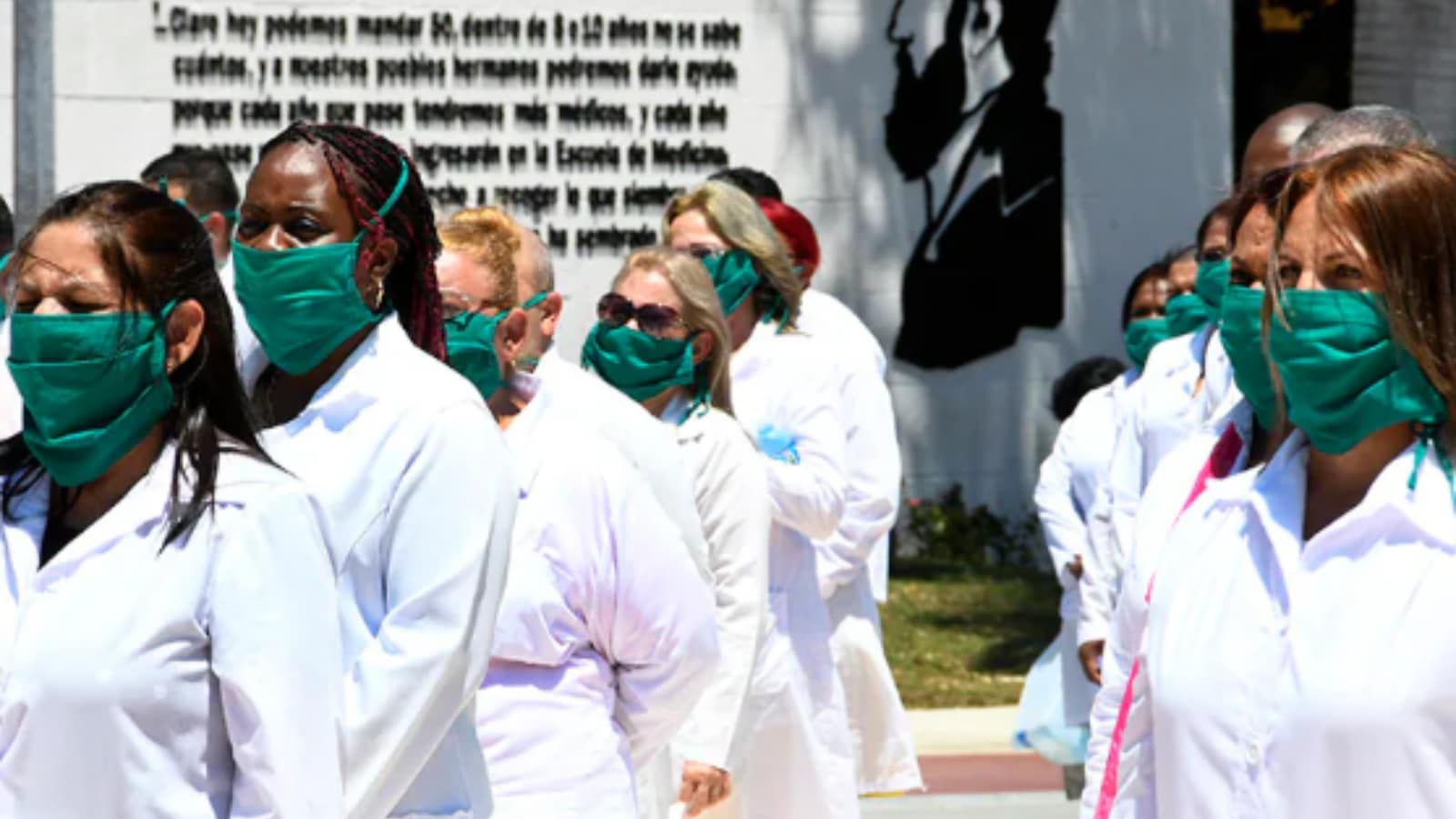During the global COVID-19 pandemic from 2020 to 2023, a small nation emerged as a key player in healthcare aid. It not only developed five vaccines but also sent doctors to several countries. Renowned for producing thousands of skilled medical professionals annually, its doctors continue to serve worldwide.
Cuba’s healthcare system, serving a population of approximately 11.5 million, is acclaimed as one of the best globally. The World Health Organisation has acknowledged that other nations can learn from Cuba’s exemplary health facilities, which boast the best patient-doctor ratio in the world.
Best Patient Doctor Ratio
In Cuba, there is one doctor for every 155 people, a ratio surpassing that of the United States and Italy. This wealth of medical expertise has positioned Cuba as a training hub for doctors from around the globe since 1998, with doctors from 123 countries having been trained there.
The former UN Secretary-General Ban Ki-moon praised Cuba’s medical school, ELAM, as the most modern in the world, a testament to the global recognition of the Cuban model of medical education.
Best Medical Education System
Cuba’s medical education system is entirely government-funded and free, providing opportunities for deserving students without financial barriers. Admission is based on high school performance and entrance exams, with special quotas for rural students. Many students from Latin America also come to Cuba to study, as all medical colleges are government-run and well-resourced.
No Private Medical Institutions
All medical colleges in Cuba are government-run, with no private institutions. The government invests heavily in education, ensuring top-quality facilities in these medical institutions.
Practical training is a cornerstone of Cuba’s medical education, with students gaining hands-on experience in community health centres and hospitals from the outset. This approach enhances their clinical skills and prepares them for a comprehensive primary care system that spans both rural and urban areas. Under the “Family Doctor Programme,” each doctor is responsible for a specific community, fostering deep patient-doctor relationships.
What Are The Key Areas Of Medical Expertise?
Cuban doctors are experts in various fields, including biotechnology, vaccine development, and epidemic control. During the COVID-19 pandemic, Cuba demonstrated its medical research capabilities by developing its own vaccines, Soberana and Abdala. Cuban doctors frequently respond to global disasters and health crises, further cementing their international reputation.
Institutions like ELAM (Latin American School of Medicine) offer free or low-cost medical education to students worldwide, thereby enhancing Cuba’s global standing. The Cuban government prioritises healthcare, ensuring that doctors have ample resources and support.
How Many Doctors Graduate Here Each Year?
Cuba boasts one of the best doctor-patient ratios globally, with 8.2 doctors per 1,000 people — among the highest in the world. Annually, Cuba produces 10,000 to 12,000 new doctors, many of whom are international students from Latin America, Africa, and Asia, including some from India. With 13 medical universities, the most renowned being ELAM, Cuba graduates a significant number of doctors each year. Currently, over 70,000 Cuban doctors serve in more than 60 countries, including disaster-stricken and developing regions.
A Legacy Of Altruism
Cuba’s history of medical philanthropy is notable. In 2004, the Operation Miracle campaign provided eye treatments and surgeries to 3.5 million Latin American citizens who could not afford care.
Similarly, during the devastating floods in Haiti, Cuban doctors were the first to arrive and the last to leave. After the deadly Ebola outbreak in Africa, 165 doctors promptly reached the affected regions with medicines and essential supplies, remaining actively involved throughout the crisis.
Doctors in Cuba are highly skilled, but it faces ongoing financial challenges. In this context, sending medical professionals abroad has become a vital way to support the national economy.
Mark Keller of the Economist Intelligence Unit notes that after Venezuela’s internal revolution in 1998, the two nations began supporting each other. Oil-rich Venezuela provided Cuba with financial aid and fuel, while Cuba sent doctors and sports trainers in return. Even today, around 21,700 Cuban professionals are working there.
Similarly, countries like Brazil, Algeria, Kenya, and Uganda also benefit from Cuban medical assistance, helping to strengthen Cuba’s economy in return.
How Much Are Doctors Paid?
Cuban doctors serving in some of the toughest conditions around the world receive a fixed salary from their government. For instance, if the minimum monthly income in Cuba is Rs 1,871, doctors typically earn about twice that amount.
In addition, host countries also pay them separately. For example, the Brazilian government provides Cuban doctors working there with an additional monthly salary of around Rs 75,000. However, these doctors often face a lack of support from local medical professionals in the countries where they are posted.
